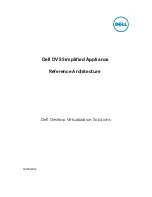
Exchanging Data via XML
71
versioning, allowing these and other enhancements to be folded into the specification
as they become available without disrupting working applications.
Working with Application-Level Data
The real strength of WDDX is clear if the client and server are seen as a unified
platform for applications. This is a subtle, but profound, distinction from the
traditional view of an application where services are partitioned between the client
and server.
In client-server, a client might query a database and get a recordset that can be
browsed, updated and returned to the server without requiring a persistent
connection. In this scenario, data is highly-structured and that structure is baked into
the client side of the application ahead of time.
While this style of databinding relies on the presence of data sources that expose
well-structured data of known types, WDDX is designed to transport application-level
data structures to facilitate seamless computing between the client and the server side
of a web application. Application-level data structures generally differ from data
exposed via traditional data sources, e.g., databases. They are generally more complex
and ad hoc, with dynamic structure. WDDX allows developers to work with this data
without the overhead of setting up a datasource for every type of data needed.
Therefore, it integrates nicely with and complements other approaches that rely on
existing data sources.
Data Exchange Across Application Servers
The other common use of WDDX is expected to be sending complex, structured data
seamlessly between different application server platforms. This will allow an
application based on ColdFusion at one business to send a purchase order, for
instance, to a supplier running a CGI-based system. The supplier could then extract
information from the order and pass it to a shipping company running an application
based on ASP. Unlike traditional client-server approaches (including distributed object
systems) minimal to no prior knowledge of the source or target systems is required by
any of the others.
Time Zone Processing
Because producers and consumers of WDDX packets can be in geographically
dispersed locations, using timezone information during the serialization and
deserialization phases becomes critical for correct date-time processing.
All of Allaire’s WDDX serializers (CFML, COM, and JS) have an attribute/property
useTimezoneInfo
that specifies whether time zone information should be used in the
serialization process. The default value is true.
Содержание COLDFUSION STUDIO 4.5-USING COLDFUSION...
Страница 1: ...Allaire Corporation Using ColdFusion Studio ColdFusion Studio 4 5 for Windows 95 98 NT4 2000...
Страница 16: ...xvi Contacting Allaire...
Страница 90: ...82...
Страница 130: ...122...
Страница 133: ...141 Two VTML tags CAT and E let you customize the content of these dialog boxes...
Страница 182: ...190...
















































